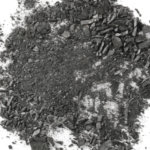
2. Calcium Deposits
Many cases of tendonitis are caused by repetitive movements or stress injuries, but in some cases, it can result from calcium deposits that build upon the tendons and interfere with their functioning. This condition is called calcific tendonitis and usually affects the shoulder joint. Experts are not sure why calcium deposits form, but they are more common in women above the age of 30.
Calcium deposits don’t happen all at once but build up over time. You may not feel it at first, but when the deposits get bigger, pain may result. Doctors can diagnose calcific tendonitis with an Xray, ultrasound or an MRI scan. This will allow the doctor to see the deposits and deal with the problem. In some cases, the calcium may be absorbed again in the body, but if it does not go away, surgery may be a way to remove the deposits.



